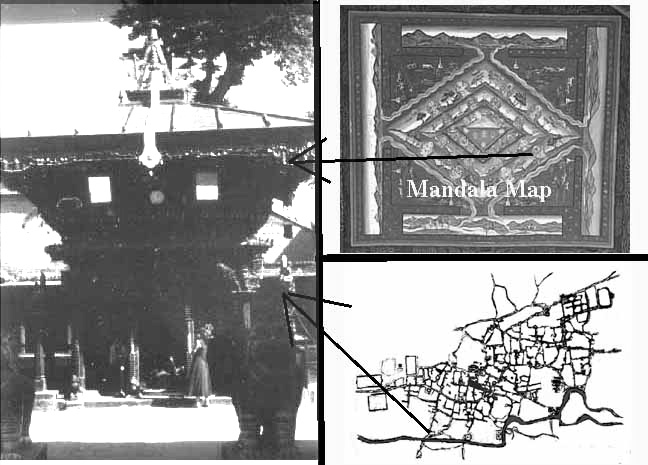
Religious lived worlds have been articulated as "sacred space." This is especially apt for Bhaktapur. Not only has sacred space long been an important category for religious studies, but since 1864 and the publication of Numa Denis Fustel de Coulanges' La Cite Antique, many scholars have seen the traditional city as one of the main places where the sacred is made manifest. And from a South Asian perspective, since Vedic times the universe has been perceived to have been created through a process of differentiation (Tucci 1969, 16).
Yet, such sacred "places" should not be understood as homogenous "spaces," which are made different because they manifest a sui generis essence. Instead, spaces are made sacred places because they are constructed ritual environments that are made different by peoplesą actions. As such, human agents (at least South Asian ones) not only dwell in sacred space/times, they are always simultaneously constructing them. Sacred spaces then are not just representations; they are the physical means, those concrete technologies, by which human agents transmit and reproduce not only "meaning," but lived worlds.